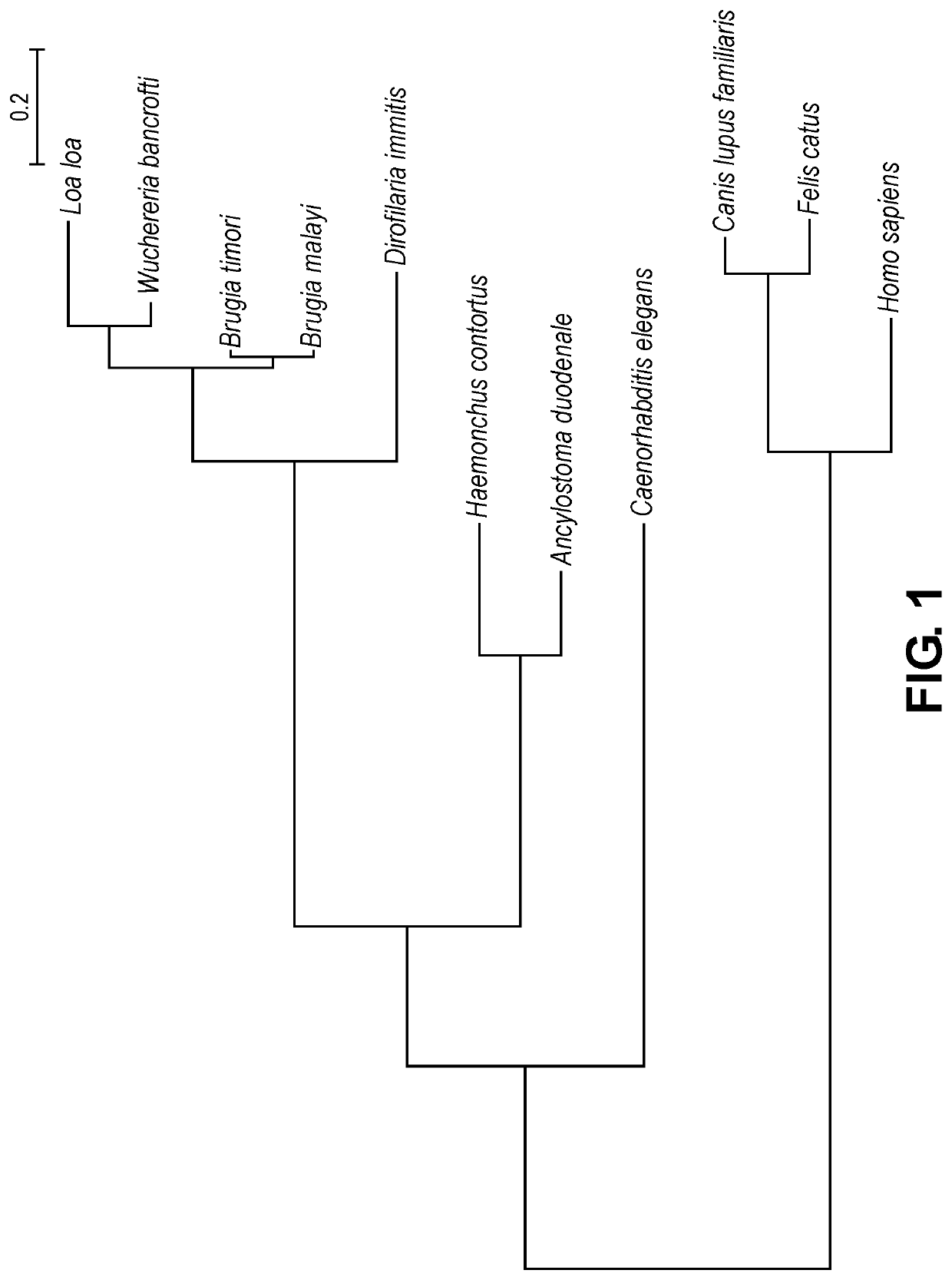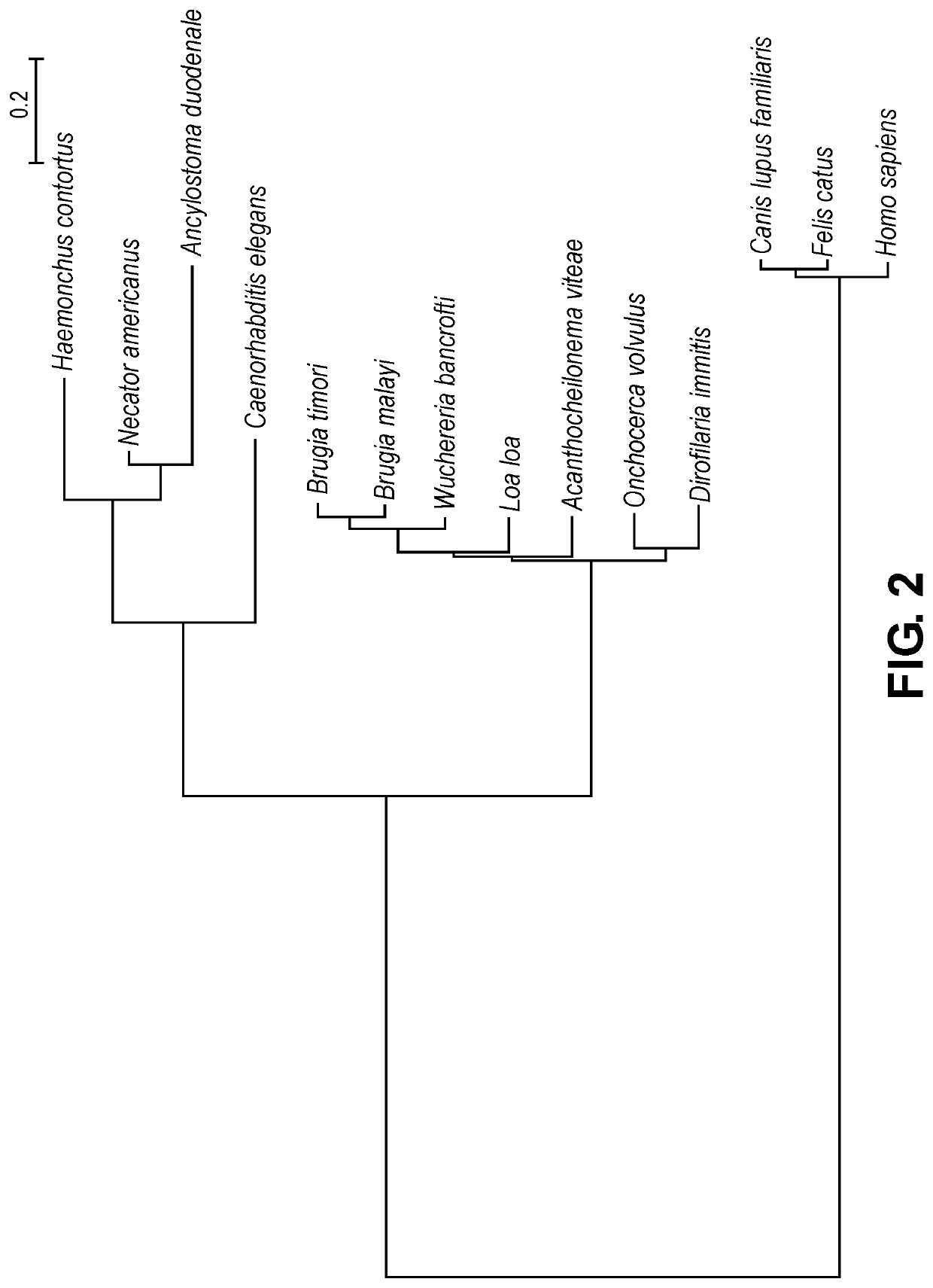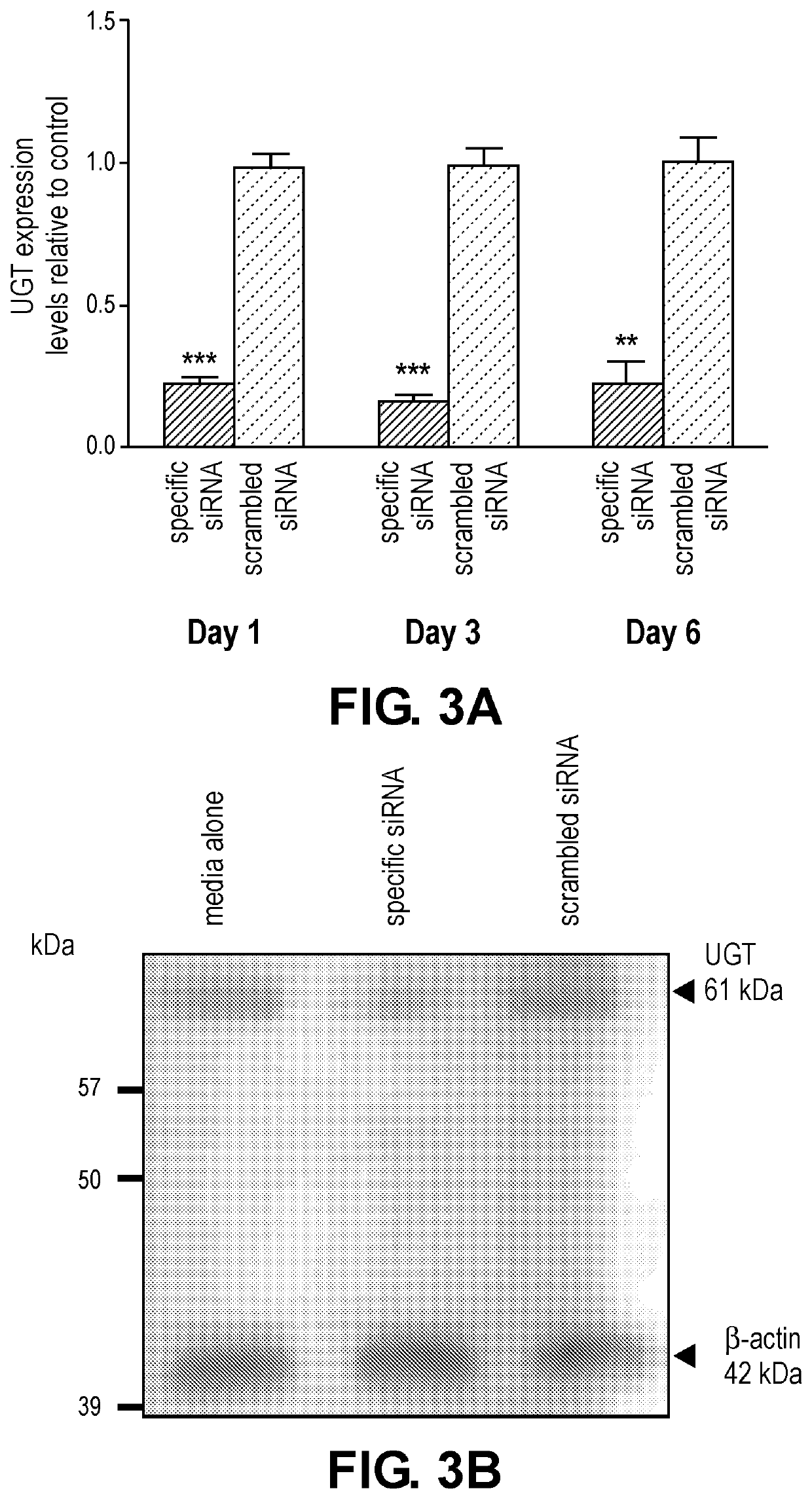Compositions and methods for preventing and/or treating filarial disease
- Summary
- Abstract
- Description
- Claims
- Application Information
AI Technical Summary
Benefits of technology
Problems solved by technology
Method used
Image
Examples
example 2
siRNA Reduces UGT mRNA and Protein Expression in Adult Worms
[0124]Experiments were conducted to evaluate reduction in target transcript and protein levels in B. malayi worms incubated with siRNA targeted to UGT. Timepoints of 1, 3, and 6 days post-siRNA treatment based on a protein half-life of approximately 10 hrs for UDP-glucuronosyltransferases (UGT) were selected. (Emi et al., Arch. Biochem. Biophys., 2002; 405(2): 163-9).
[0125]siRNA design: Using the BLOCK-iT RNAi Designer, the top three Bma-iUGT siRNA duplexes were selected for gene silencing activity and specificity (Invitrogen, Carlsbad, Calif., US). The Bma-iUGT siRNA and corresponding scrambled siRNA were synthesized by Life Technologies (Carlsbad, Calif., US) and purified by standard desalting methods. The 5′-3′ sequences of the Bma-iUGT siRNA strands were as follows:
Bma-iUGT siRNA 1:sense:(SEQ ID NO: 5)5′ GCCUAACGAAACUAAGCAAdTdT 3′antisense:(SEQ ID NO: 6)5′ UUGCUUAGUUUCGUUAGGCdTdT 3′Bma-iUGT siRNA 2:sense:(SEQ ID NO: 7)5...
example 3
Knockdown Results in Decreased Worm Viability and Fecundity
[0133]After successfully demonstrating that siRNA reduces Bma-iUGT expression, resultant changes in worm motility, microfilariae release, and metabolism were investigated. Metabolism was evaluated by a (4,5-dimethylthiazol-2-yl)-2,5-diphenyltetrazolium bromide (MTT) reduction assay.
[0134]Worm motility: Worms were visualized with a dissecting microscope by an observer blinded to treatment category. Motility of the adult female B. malayi worms was rated based on the following scale: 4=active movement, 3=modest reduction in movement, 2=severe reduction in movement, 1=twitching, and 0=no movement.
[0135]Microfilariae release: For each timepoint, adult worms were placed in new culture media 24 hrs prior to enumeration of microfilariae. After the overnight incubation, the worms were then removed for processing by the (4,5-dimethylthiazol-2-yl)-2,5-diphenyltetrazolium bromide (MTT) reduction assay and reverse-transcription-quantitat...
example 4
with UGT Inhibitors Exhibits Macrofilaricidal Activity In Vitro
[0141]The dramatic decrease in worm viability and fecundity after siRNA inhibition demonstrated that Bma-iUGT is an essential protein for adult B. malayi survival. In view of these findings, the effects UGT inhibitors on adult worm survival were evaluated. Non-specific UGT inhibitors for activity against B. malayi adult worms were tested in vitro. Both of these agents, sulfinpyrazone and probenecid, are FDA-approved medications that are used to treat gout. (Domenjoz R., Annals of the New York Academy of Sciences, 1960; 86(1): 263-91; Uchaipichat et al., Drug Metab Dispos., 2006; 34(3):449-56; Cunningham et al., Clin. Pharmacokinet., 1981; 6(2):135-51; Uchaipichat et al., Drug Metab Dispos., 2004; 32(4):413-23).
[0142]Adult B. malayi worm incubation with UGT inhibitors: UGT inhibitors, sulfinpyrazone (ChemCruz, Santa Cruz Biotechnology, Dallas, Tex., US) and probenecid (Invitrogen, Carlsbad, Calif., US), were evaluated for...
PUM
| Property | Measurement | Unit |
|---|---|---|
| Enzyme activity | aaaaa | aaaaa |
Abstract
Description
Claims
Application Information
 Login to View More
Login to View More - R&D Engineer
- R&D Manager
- IP Professional
- Industry Leading Data Capabilities
- Powerful AI technology
- Patent DNA Extraction
Browse by: Latest US Patents, China's latest patents, Technical Efficacy Thesaurus, Application Domain, Technology Topic, Popular Technical Reports.
© 2024 PatSnap. All rights reserved.Legal|Privacy policy|Modern Slavery Act Transparency Statement|Sitemap|About US| Contact US: help@patsnap.com










